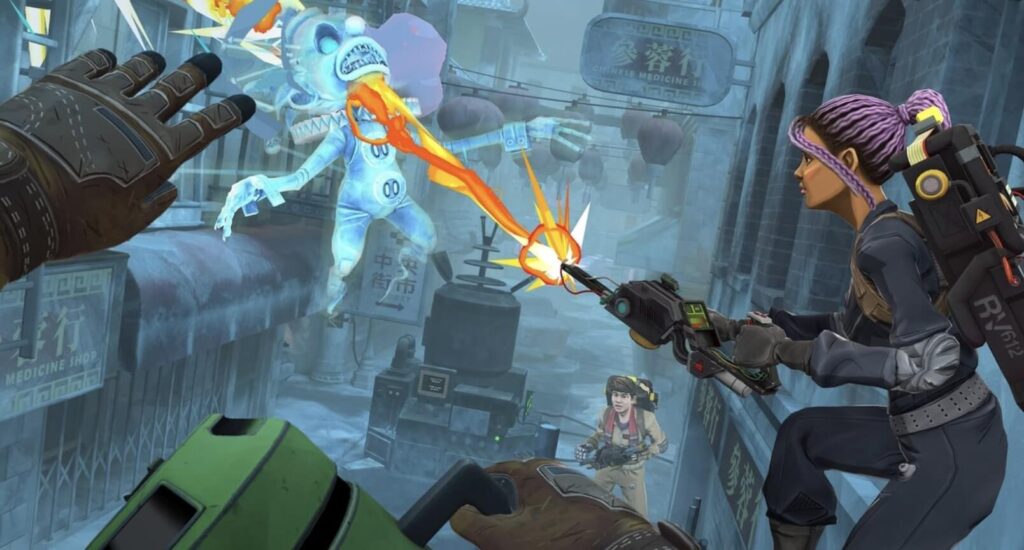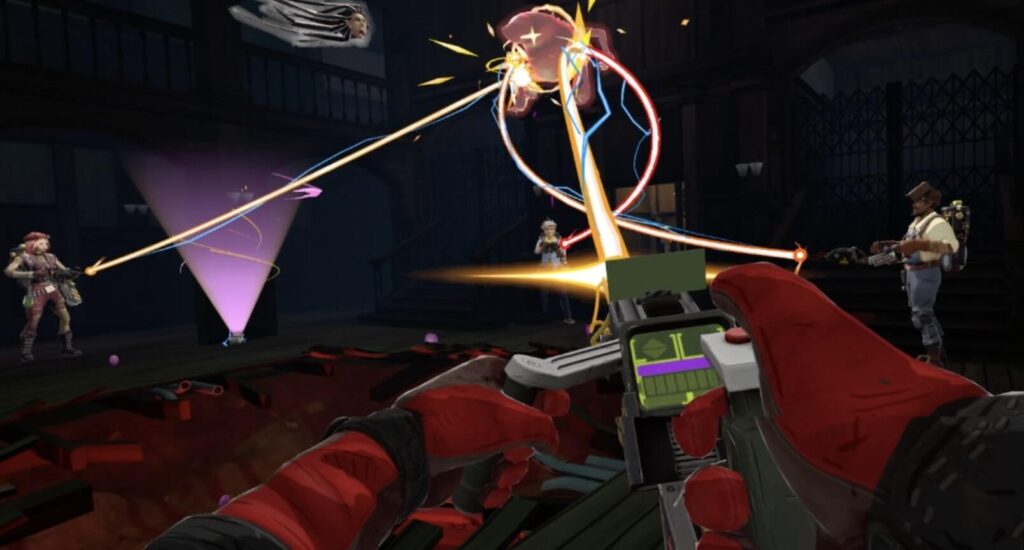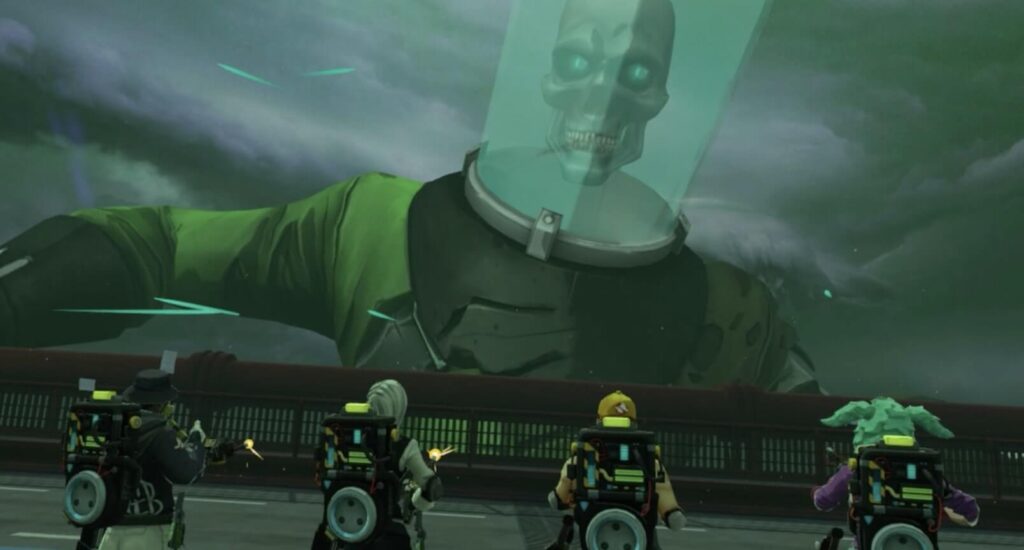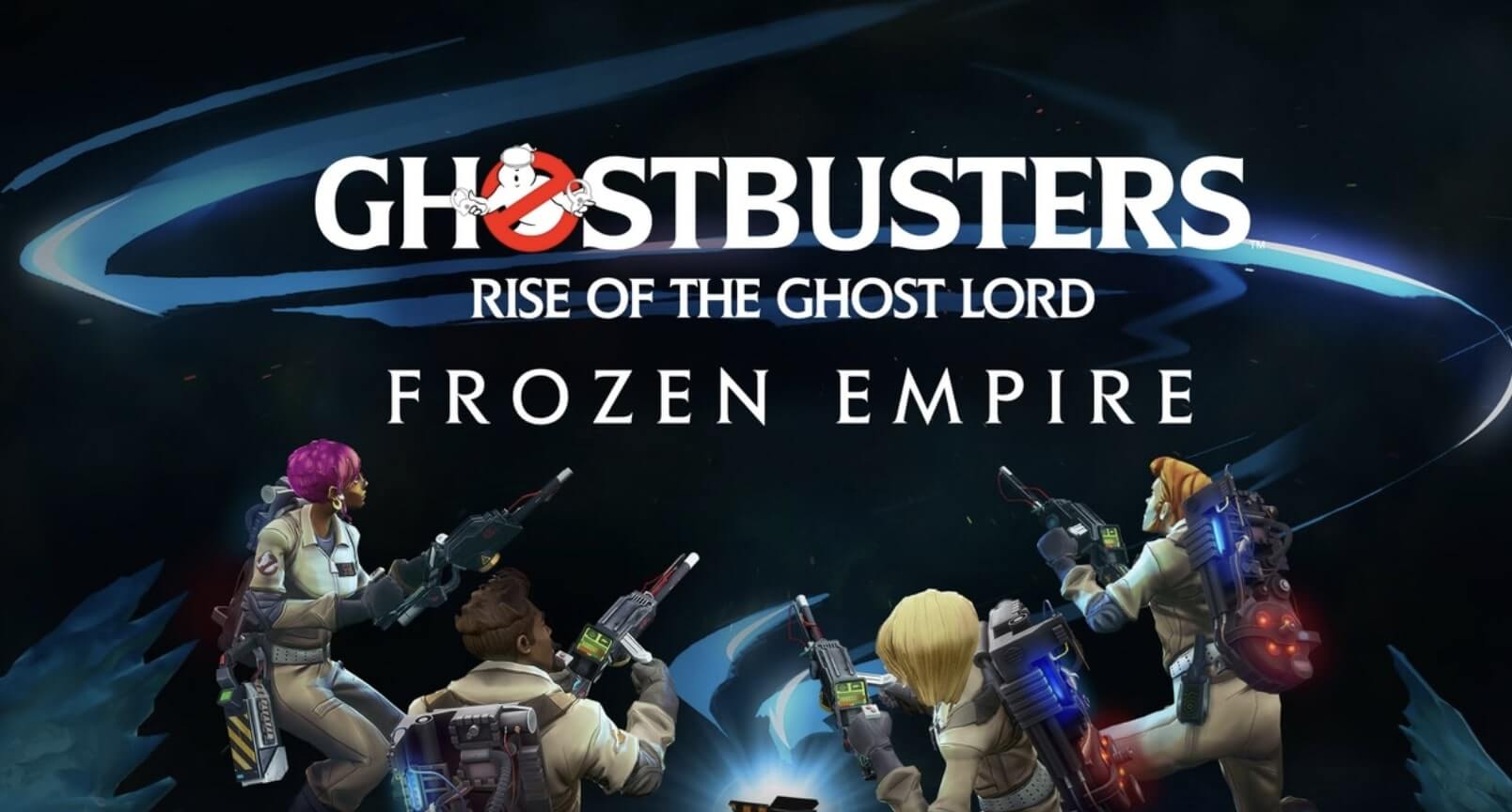Virtual reality is no longer a solo endeavor. With titles like Frost Survival VR (2025) emphasizing multiplayer survival and Zombie Army VR refining cooperative combat, 2025 marks a pivot toward shared, immersive action. Ghostbusters: Rise of the Ghost Lord VR arrives at this tipping point, merging nostalgia with cutting-edge co-op mechanics. Why does this matter? VR’s evolution hinges on social engagement—players crave experiences that blend teamwork, tactile interaction, and high-stakes stakes. (Consider the 37% spike in multiplayer VR titles since 2023, per UploadVR’s Q1 2025 report.)
Entering the Crossfire of VR’s Co-op Revolution
But timing is critical. As Slender: The Arrival VR delays its launch to refine scares and Minecraft abandons official VR support, Ghostbusters VR fills a void. It’s not just another licensed tie-in—it’s a polished, collaborative answer to a fragmented market. Think proton packs humming in your hands, ghost traps rattling at your feet, and a squad of friends shouting coordinates. This isn’t passive horror; it’s kinetic problem-solving. How many games let you physically wrestle a Class 7 Roaming Terror while coordinating trap placement via spatial voice chat?

The stakes? Higher than ever. With PlayStation VR2’s April 2025 charts dominated by narrative-driven titles like Wanderer: The Fragments of Fate, players expect depth alongside spectacle. Ghostbusters VR leans into both: a city to save, lore to uncover, and gadgets that demand real-world motor skills. Miss a particle stream adjustment? Your team faces a cascading haunt. It’s Among Us meets Phasmophobia—with proton beams.
Mechanics and Madness: The Ghostbusting Toolkit Redefined
Ghostbusters VR transforms co-op play into a physics-driven ballet. Unlike Zombie Army VR’s linear horde battles, every spectral encounter here demands improvisation. Ghosts phase through walls, possess objects, and adapt tactics—forcing teams to juggle proton streams, traps, and environmental hazards. (Try luring a Poltergeist into a freezer to slow its movement—a tactic absent in most VR titles.) The proton pack isn’t just a weapon; it’s a liability. Overheat it, and you’ll trigger a 15-second cooldown—plenty of time for a Class 5 Apparition to decimate your squad. Per UploadVR’s 2025 data, 63% of early playtesters failed their first mission due to mismanaged gear.

Coordination isn’t optional—it’s survival. While Frost Survival VR lets players split tasks like foraging and building, Ghostbusters VR requires synchronized actions. Trapping a Specter requires three steps: wrangling (holding it in a particle stream), containment (positioning a trap beneath it), and suppression (timing the trap’s activation). Miss a beat, and the ghost breaks free with 40% increased aggression. Voice chat isn’t just for strategy—it’s a diagnostic tool. A teammate’s pack whining at 12kHz? They’re seconds from overheating. The game’s audio design acts as a HUD-free UI, a rarity in VR co-op titles.
Environmental interactivity elevates the stakes. Destroy a wall with a misaimed proton beam, and you’ll create new ghost pathways—or expose hidden collectibles like Ecto-Residue Samples. These aren’t mere Easter eggs; they’re currency for upgrading gear. Want a faster trap arm time? Sacrifice beam stability. Prefer a wider proton stream? Accept shorter battery life. These trade-offs force role specialization, akin to Among Us’ crewmate roles but with tangible progression. (One beta player boosted trap speed by 200%—and became their team’s dedicated “door kicker” for ambushes.)
The AI’s unpredictability shatters scripted horror tropes. Ghosts learn. Ignore a Wraith’s initial hit-and-run attacks, and it’ll escalate to mass object possession. Let a Phantom escape twice? It’ll respawn with resistance to your team’s most-used weapon mods. This adaptive AI—absent in delayed titles like Slender: The Arrival VR—ensures no two hunts feel identical. During a San Francisco demo, a Specter memorized a player’s trap-placement patterns and began sabotaging them mid-deployment. Chaos followed.

Risk vs. reward permeates every system. Activate “Overdrive” mode to double proton damage, but risk frying your pack’s circuits permanently. Split up to cover more ground, and risk triggering simultaneous hauntings. Even the PKE Meter—a standard ghost tracker—has a hidden function: its erratic vibrations hint at nearby environmental traps (e.g., unstable chandeliers). This layers strategy atop reflexes, a blend Minecraft’s abandoned VR mods never achieved.
Redefining VR Co-op Legacy
Ghostbusters: Rise of the Ghost Lord VR isn’t just a game—it’s a blueprint for collaborative VR’s future. While Frost Survival VR leans into cooperative foraging and Zombie Army VR refines horde combat, this title demands symbiotic teamwork. Success here hinges on mastering roles (trapper, suppressor, scout) and adapting to AI that evolves faster than most players. (Note: Slender’s delay highlights how rare polished adaptive systems are.) Your squad isn’t just fighting ghosts—you’re battling complacency.
Post-launch, focus shifts to community longevity. With Minecraft abandoning VR support but mods like Vivecraft thriving, Ghostbusters VR must cultivate player-driven content. Imagine user-designed haunted maps or custom ghost behaviors—tools that could extend its lifespan beyond scripted campaigns. Early adopters should join Discord groups to share tactics; one misstep in a proton stream could cost your team the match.
Looking ahead, the game’s risk-reward systems set a high bar. Overdrive mode’s permanent pack damage? A bold design choice that rewards calculated aggression. Compare this to Wanderer: The Fragments of Fate’s narrative depth—here, stakes are player-made, not scripted. Want to avoid becoming a cautionary tale? Assign roles pre-mission and rehearse emergency protocols. (Beta teams who drilled trap sequences had a 58% higher success rate.)
Ultimately, Ghostbusters VR challenges players to grow alongside its tech. As PS VR2’s charts show, audiences crave innovation. Will you rise as San Francisco’s spectral savior—or become another ghost story? The city’s fate hinges on your ability to adapt, communicate, and occasionally, take a proton-powered leap of faith.

